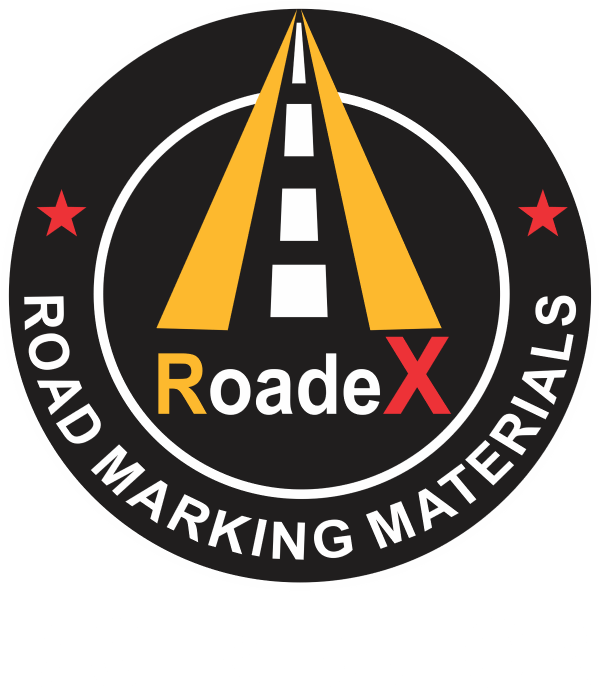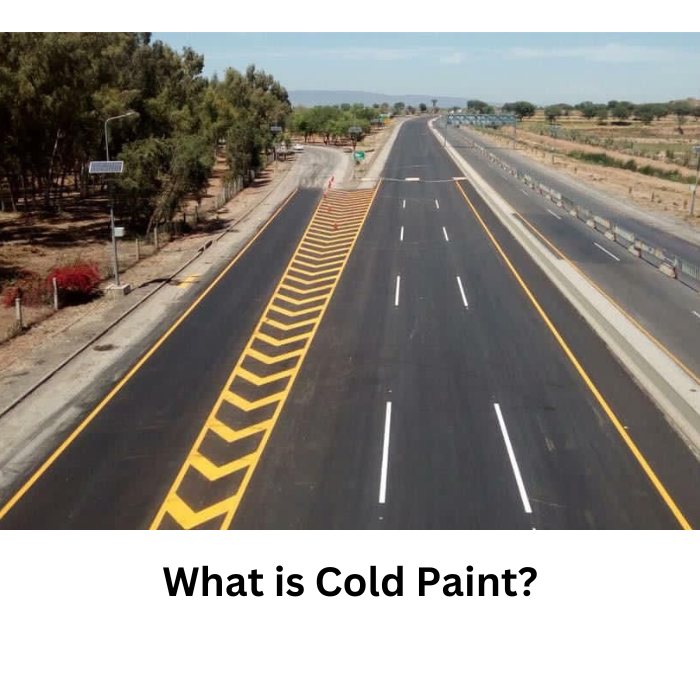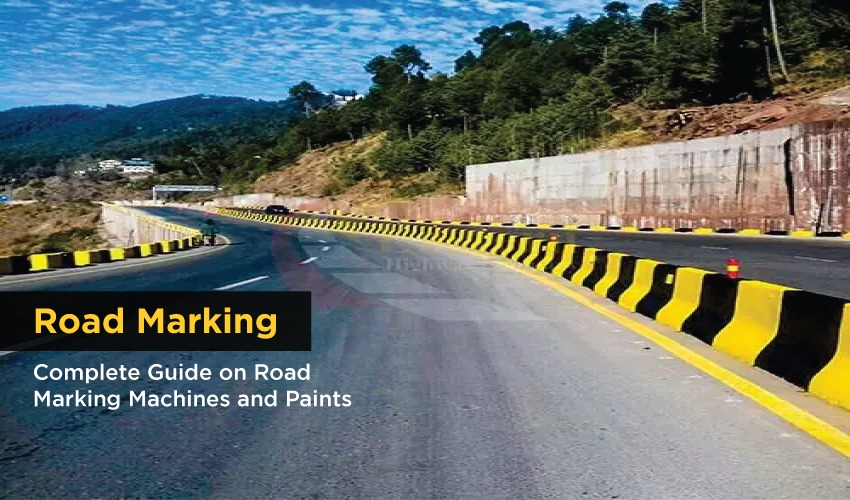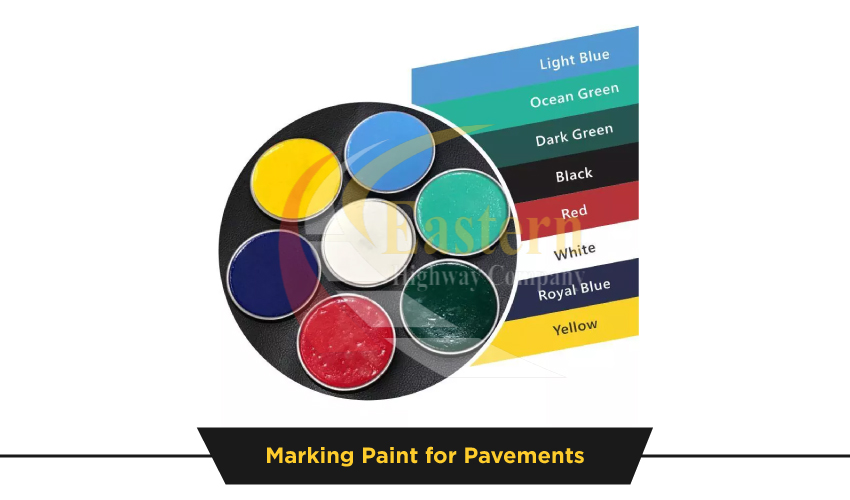Cold paint is one of the paints used for road marking. Cold paint is a paint that is applied at room temperature.
What is Cold Paint?
Cold paint refers to a type of paint that is typically applied to a surface at room temperature or slightly above. It is commonly used for marking roads, parking lots, and other outdoor surfaces where durability and visibility are critical. It is also known as solvent-based paint, as it contains solvents that help it adhere to a variety of surfaces.
The composition of this varies, but it typically consists of a mixture of pigments, resins, solvents, and additives. The pigments provide color to the paint, while the resins and solvents help it adhere to the surface and dry quickly. The additives are used to improve the performance of the paint, such as increasing its durability or improving its drying time.
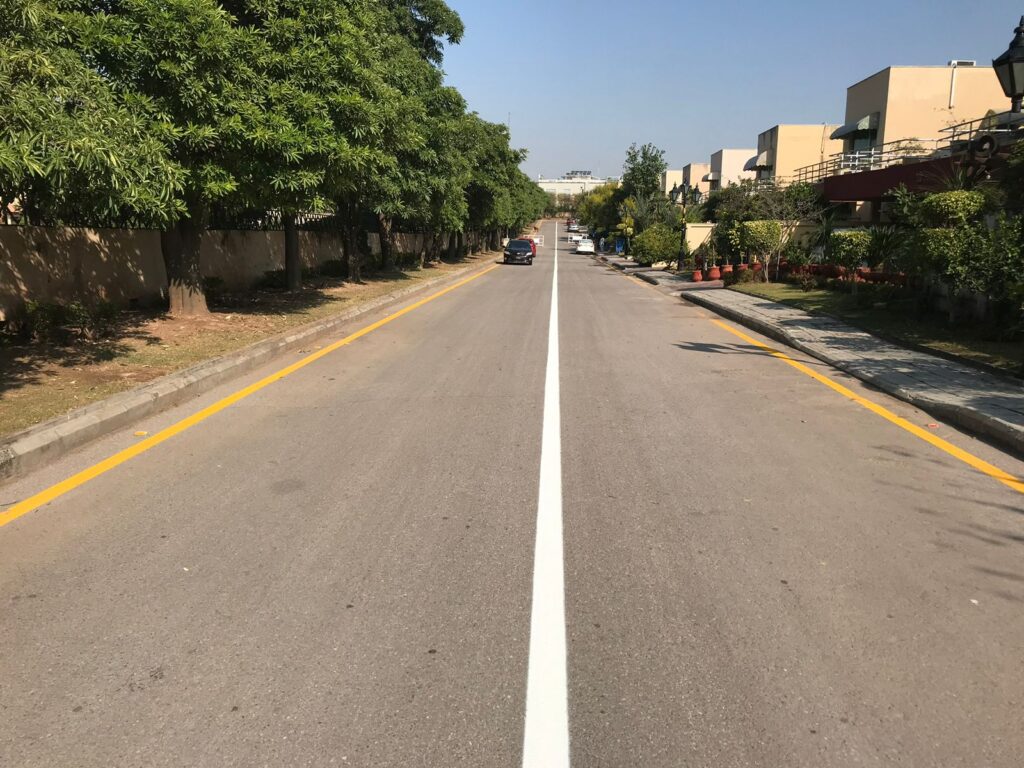
This is a versatile and widely used type of paint that is suitable for a variety of applications. Its ease of application, quick drying time, and durability make it a popular choice for marking roads, parking lots, and other outdoor surfaces. However, it is important to consider the specific needs of a project before choosing a type of paint, as different types of paint may be better suited for different applications.
How is Cold Paint different from thermoplastic paint?
Cold paint and thermoplastic paint are both used for marking roads and other surfaces, but there are some key differences between them in terms of their composition, application, durability, and cost.
Composition
This paint is typically made up of pigments, resins, solvents, and additives. The solvents in cold paint help it to adhere to surfaces, and it can be applied using a variety of methods, such as by brush, roller, or spray gun.
Thermoplastic paint, on the other hand, is made up of synthetic resin, glass beads, and pigment. It is applied to the surface at high temperatures using specialized equipment, which melts the thermoplastic material and allows it to bond to the surface.
Application
It is relatively easy to apply and can be done with simple tools such as brushes and rollers. It dries quickly and can be applied in a variety of weather conditions. However, it may not adhere as well to surfaces that are dirty or oily.

Thermoplastic paint requires specialized equipment to apply, such as a thermoplastic applicator machine. The surface must be cleaned thoroughly before application, and the paint must be applied in dry weather conditions. The application process is more complex than that of cold paint, but the resulting markings are typically more durable and long-lasting.
Durability
It is less durable than thermoplastic paint and may start to crack or peel over time, especially in areas with heavy traffic or exposure to extreme weather conditions. It is also more prone to fading and weathering over time.
Thermoplastic paint is highly durable and can last up to 6 times longer than cold paint. It is more resistant to weathering, fading, and abrasion, making it ideal for use in high-traffic areas such as highways and airports.
Cost
Cold paint is generally less expensive than thermoplastic paint, which can be more costly due to the specialized equipment and application process required. However, the longer lifespan and durability of thermoplastic paint may make it a more cost-effective option in the long run.
In summary, while both cold paint and thermoplastic paint are used for marking roads and other surfaces, thermoplastic paint is a more durable and long-lasting option, albeit more costly and difficult to apply. It is a simpler and more affordable option, but may not be as durable or long-lasting. Choosing the right type of paint will depend on the specific needs and requirements of the project.
What are the advantages of Cold Paint?
Cold paint, also known as solvent-based paint, is a type of paint that is commonly used for marking roads, parking lots, and other outdoor surfaces.
One of the advantages of this paint is its ease of application. It can be applied using a variety of methods, including by brush, roller, or spray gun. The paint dries relatively quickly, typically within an hour, which allows for quick turnaround times on projects. Additionally, cold paint is resistant to fading and weathering, which makes it suitable for use in outdoor environments.
1. Dries quickly: One of the most significant advantages of cold paint is that it dries quickly. This means that it can be applied and dried in a short amount of time, which is essential for marking roads and parking lots where traffic needs to resume quickly.
2. Good visibility: Cold paint is highly visible and can be used to create bright, high-contrast lines that are easy to see, even in low-light conditions. This makes it an ideal choice for marking roadways, bike lanes, and pedestrian crosswalks.
3. Durable: Cold paint is durable and can withstand exposure to elements, including rain, snow, and extreme temperatures. This makes it a great choice for outdoor surfaces that need to be marked with long-lasting, weather-resistant paint.
4. Versatile: It can be used on a wide range of surfaces, including asphalt, concrete, and metal. It can also be used to create a variety of different markings, including lines, arrows, and symbols.
5. Easy to apply: It is easy to apply using a variety of different methods, including a brush, roller, or spray. This makes it a cost-effective choice for marking large areas.
6. Low VOC emissions: Cold paint is formulated with low levels of volatile organic compounds (VOCs), which makes it an environmentally friendly choice.
7. Adheres well: Cold paint adheres well to the surface it is applied to, which means that it is less likely to peel or fade over time. This makes it an ideal choice for areas that experience heavy traffic or harsh weather conditions.
Overall, the advantages of cold paint make it a popular choice for marking roads, parking lots, and other outdoor surfaces. Its quick-drying time, high visibility, durability, versatility, ease of application, low VOC emissions, and excellent adhesion make it a reliable and cost-effective option for many different applications.
What are the disadvantages of Cold paint?
However, cold paint also has some disadvantages. For example, it is typically not as durable as other types of paint, such as thermoplastic or epoxy paint. It can also be less environmentally friendly, as it contains solvents that can be harmful to the environment if not properly disposed of. It is also more prone to cracking or peeling over time, especially in areas with heavy traffic or exposure to extreme weather conditions.




